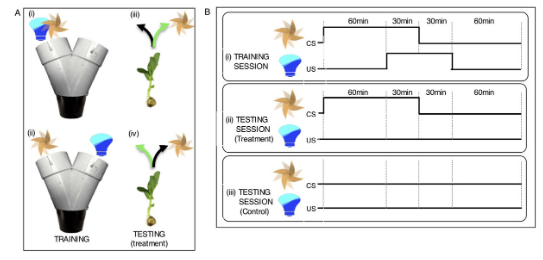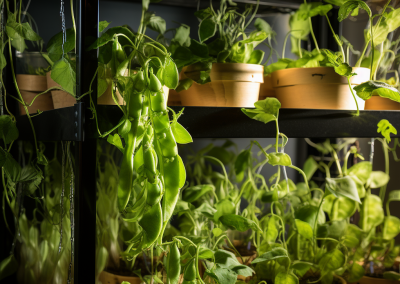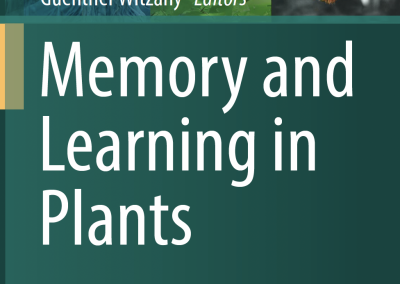Introduction
This project focused on investigating associative learning in pea plants (Pisum sativum), a vital area of research that sheds light on plant intelligence and adaptive behavior. This study draws inspiration from Gagliano et al.’s 2016 study. Importantly, it not only aims to replicate findings, but also address potential limitations in the original experimental design.
Associative learning in plants
In recent decades, plant scientists have become interested in the study of associative learning, although the topic remains highly contentious. A number of studies from 1960-70s explored the possibility of learning in plants. These studies, designed mostly around the leaf folding behaviour of the ‘sensitive plant’ Mimosa pudica, delivered a mixture of negative, positive, and unclear or confusing evidence. Then, in 2016, a new study claimed strong positive evidence for associative learning.
The original study
Gagliano et al.’s 2016 study, titled “Learning by Association in Plants,” explored the possibility of Pavlovian associative learning in pea plants (Pisum sativum). The researchers investigated whether these plants could learn the association between airflow and blue light, which would guide their phototropic behavior. To test this, they used a Y-maze setup and observed which arm of the maze the pea plants grew into.
The key conclusion of the study was that pea plants appeared to demonstrate associative learning, as they were able to learn the connection between airflow and the presence of blue light. This finding challenged traditional views on plant intelligence and behavior, suggesting that plants might be capable of a higher level of adaptability and responsiveness to their environment than previously thought.
Subsequent Criticisms
The original study was criticized by some to have employed a flawed methodology. Issues ranged from germination and transplantation of seedlings to the apparatuses used and thus called into question the experimental design and protocols followed by Gagliano et al. and the subsequent attempted replication. Critically, opaque Y mazes prevent direct observation of plant behavior throughout their experiments and make it impossible to either accept or reject the possibility of associative learning in the current experimental setup.

Gagliano’s original experimental setup: (A) During training seedlings were exposed to the fan [F] and light [L] on either the same arm (i) or on the opposite arm (ii) of the Y-maze. The fan served as the conditioned stimulus (CS), light as the unconditioned stimulus (US). During testing with exposure to the fan alone two categories of responses were distinguished. Correct response: Seedlings growing into the arm of the maze where the light was “predicted” by the fan to occur [green arrow; iii (corresponding to scenario i) and iv (corresponding to scenario ii)]; Incorrect response: Seedlings growing into the arm of the maze where the light was not “predicted” by the fan to occur (black arrow; iii and iv). More
The importance of replication studies
Our research highlights the importance of replication studies in the field of plant intelligence and learning, which helps ensure the robustness and reliability of reported findings. By using seeds and the methodology provided by the corresponding author of the original paper, we will incorporate non-invasive time-lapse photography to monitor plant growth throughout the experiment and increase statistical power.
The importance of pre-registered studies
This replication study will be published as a pre-registered study. Pre-registered studies play a crucial role in enhancing the rigor, transparency, and reproducibility of scientific research. By specifying research questions, hypotheses, methodology, and data analysis plans in advance, pre-registration helps prevent biases, such as selective reporting, data dredging, and post-hoc hypothesis formulation. This process encourages researchers to adhere to their original plan, which ensures that studies are conducted in a transparent and accountable manner. Ultimately, pre-registered studies contribute to the overall credibility of scientific findings and help establish a more reliable and trustworthy body of knowledge across various disciplines.
Donor
Office of Naval Research – Global (USA)
Duration
2018-2022
Lead Investigator
Paco Calvo
Project Gallery
Related News
Latest Publications
A new, improved methodology
Working with the hypothesis that plants can profit from experience, we will explore associative learning in pea plants, similar to the forms observed in invertebrates. By combining the neoGibsonian paradigm of ‘direct learning’ with neobehaviorist principles, we aim to bypass the limitations of traditional behaviorist approaches in cognitive sciences.








